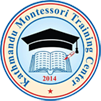
Montessori Method
Maria Montessori was born on August 31, 1870, in Chiaravalle, Italy. In 1907 she was placed in charge of the Casa dei Bambini school. By 1925, more than 1,000 Montessori schools had opened in the United States. By 1940 the Montessori movement had faded, but it was revived in the 1960s. During World War II, Montessori developed Education for Peace in India, and earned two Nobel Peace Prize nominations. She died May 6, 1952, in Noordwijk aan Zee, Netherlands. Early Life Maria Montessori was born on August 31, 1870, in the provincial town of Chiaravalle, Italy, to middle-class, well-educated parents. At the time that Montessori was growing up, Italy held conservative values about women's roles. From a young age, she consistently broke out of those proscribed gender limitations. After the family moved to Rome, when she was 14, Montessori attended classes at a boys' technical institute, where she further developed her aptitude for math and her interest in the sciences: particularly biology. Facing her father's resistance but armed with her mother's support, Montessori went on to graduate with high honors from the medical school of the University of Rome in 1896. In so doing, Montessori became the first female doctor in Italy. Early Childhood Education Research As a doctor, Montessori chose pediatrics and psychiatry as her specialties. While teaching at her medical-school alma mater, Montessori treated many poor and working-class children who attended the free clinics there. During that time, she observed that intrinsic intelligence was present in children of all socio-economic backgrounds. Montessori became the director of the Orthophrenic School for developmentally disabled children in 1900. There she began to extensively research early childhood development and education. Her reading included the studies of 18th and 19th century French physicians Jean-Marc-Gaspard Itard and Edouard Seguin, who had experimented with the capabilities of disabled children. Montessori began to conceptualize her own method of applying their educational theories, which she tested through hands-on scientific observation of students at the Orthophrenic School. Montessori found the resulting improvement in students' development remarkable. She spread her research findings in speeches throughout Europe, also using her platform to advocate for women's and children's rights. Educational Legacy Montessori's success with developmentally disabled children spurred her desire to test her teaching methods on "normal" children. In 1907 the Italian government afforded her that opportunity.
Montessori was placed in charge of 60 students from the slums, ranging in age from 1 to 6. The school, called Casa dei Bambini (or Children's House), enabled Montessori to create the "prepared learning" environment she believed was conducive to sense learning and creative exploration. Teachers were encouraged to stand back and "follow the child": that is, to let children's natural interests take the lead. Over time, Montessori tweaked her methods through trial and error. Her writings further served to spread her ideology throughout Europe and the United States. By 1925 more than 1,000 of her schools had opened in America. Gradually Montessori schools fell out of favor; by 1940 the movement had faded and only a few schools remained. Once World War II began, Montessori was forced to flee to India, where she developed a program called Education for Peace. Her work with the program earned her two Nobel Peace Prize nominations. Montessori died on May 6, 1952, in Noordwijk aan Zee, Netherlands. The 1960s witnessed a resurgence in Montessori schools, led by Dr. Nancy McCormick Rambusch. Today, Montessori's teaching methods continue to "follow the child" all over the globe.

